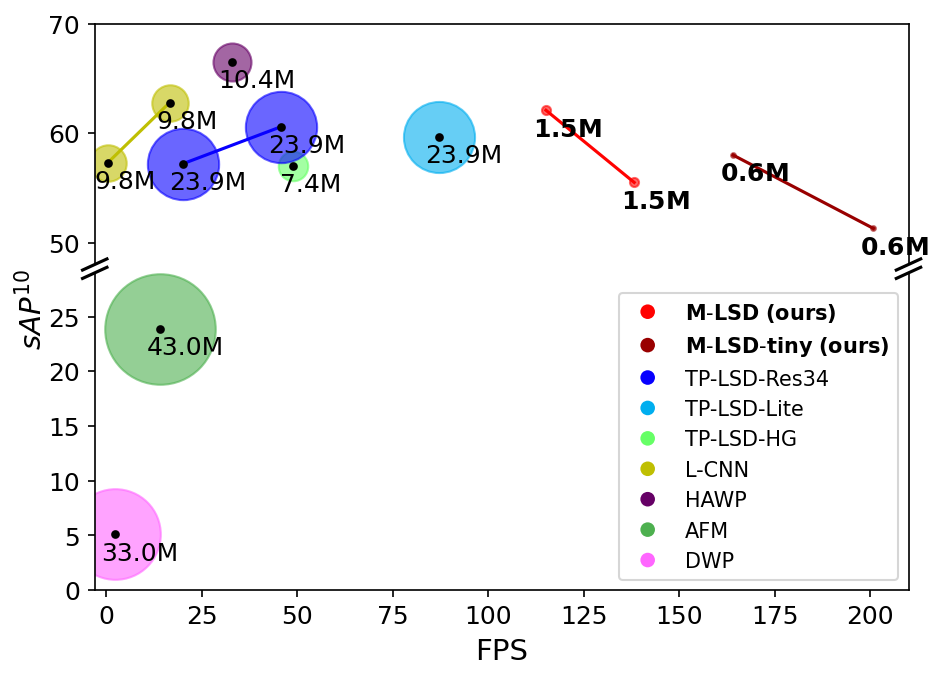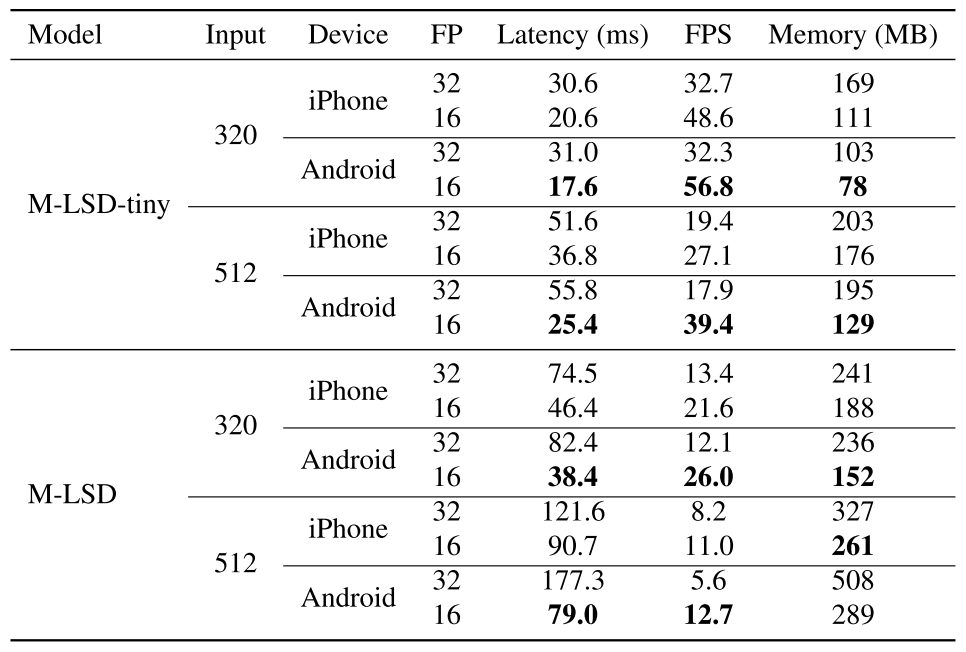mlsd_pytorch
Pytorch implementation of "M-LSD: Towards Light-weight and Real-time Line Segment Detection"
update 2021.07.20
We have push our training code in mlsd_pytorch/
| model | img_size | sAP10 |
|---|---|---|
| mlsd_tiny (this repo) | 512 | 56.4 |
| mlsd_tiny (in the paper) | 512 | 58.0 |
| mlsd_large (this repo) | 512 | 59.6 |
| mlsd_large (in the paper) | 512 | 62.1 |
(this repo use: min_score=0.05, min_len=5, tok_k_lines= 500)
Pytorch implementation of "M-LSD: Towards Light-weight and Real-time Line Segment Detection"
origin repo: https://github.com/navervision/mlsd
Overview


First figure: Comparison of M-LSD and existing LSD methods on GPU.
Second figure: Inference speed and memory usage on mobile devices.
demo

How to run demo
Install requirements
pip install -r requirements.txt
Run demo
The following demo test line detect (simplest):
python demo.py
The following demo run with flask in your local:
python demo_MLSD_flask.py
you can upload a image the click submit, see what happen.
http://0.0.0.0:5000/
Run in docker
Follow the instructions from https://docs.docker.com/engine/install/ubuntu,
https://github.com/NVIDIA/nvidia-container-runtime#docker-engine-setup and
https://docs.docker.com/compose/install/#install-compose-on-linux-systems to setup your environment.
- Build the image
docker-compose build
- Run the demo
docker-compose up
- Run the flask demo
docker-compose -f docker-compose.yml -f docker-compose.flask.yml up
Citation
If you find M-LSD useful in your project, please consider to cite the following paper.
@misc{gu2021realtime,
title={Towards Real-time and Light-weight Line Segment Detection},
author={Geonmo Gu and Byungsoo Ko and SeoungHyun Go and Sung-Hyun Lee and Jingeun Lee and Minchul Shin},
year={2021},
eprint={2106.00186},
archivePrefix={arXiv},
primaryClass={cs.CV}
}






